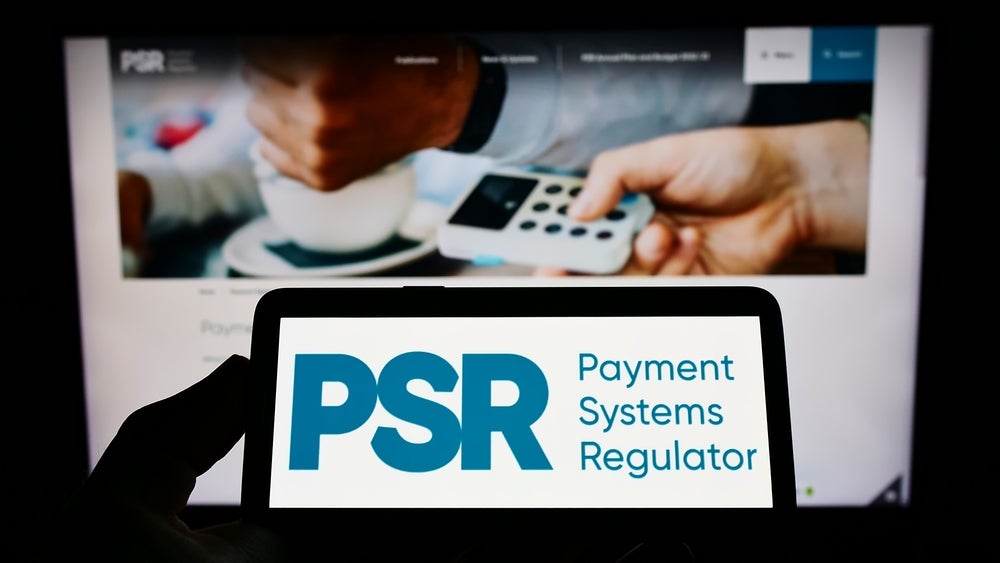Nigeria is emerging as a
key market in Africa’s burgeoning electronic payments industry.
Financial services players in the country are now trying to
capitalise on technological innovation by rolling out increasingly
sophisticated offerings and embarking on intensive consumer
education, as Victoria Conroy reports.
 In a cash-dominated country
In a cash-dominated country
where only around 30% of the 154m-strong population are classed as
banked, Nigeria is making a name for itself as fertile ground for
growth in electronic payments. This is thanks to a combination of
strenuous government efforts to reduce cash usage, and financial
services providers who are utilising the latest technology
innovations to reach out to previously hard-to-reach consumers.
The result of these efforts is
evident in the fact that in 2008, electronic payments accounted for
over NGN360bn ($2.39bn) of transactions, and their introduction has
led to lower operational costs for banks and improved efficiency
thanks to the reduced amount of cash in the banking system –
although 80% of cash still remains outside the banking sector.
Although cards are being
enthusiastically promoted and adopted (with staggering growth rates
to match), Nigeria’s banks are also finding that mobile phones are
in many cases an ideal tool to extend financial services of all
kinds, and also a convenient and cost-effective way of overcoming
the shortage of ATM and POS locations to provide branchless
banking.
Nigeria’s government has embarked
upon a strategic plan to grow its economy to be among the 20
largest economies in the world by the year 2020, under a project
titled Financial System Strategy 2020. One of the
objectives of this plan is for electronic payments to form the
bedrock of all financial transactions.
One of the first steps of the 2020
strategy is that, by the end of December 2010, all businesses with
more than 50 employees will be required to make salary or pension
payments via direct deposit into a bank account, which will
significantly reduce the number of unbanked people, and lead to
greater debit card usage.
How well do you really know your competitors?
Access the most comprehensive Company Profiles on the market, powered by GlobalData. Save hours of research. Gain competitive edge.

Thank you!
Your download email will arrive shortly
Not ready to buy yet? Download a free sample
We are confident about the unique quality of our Company Profiles. However, we want you to make the most beneficial decision for your business, so we offer a free sample that you can download by submitting the below form
By GlobalDataIn tandem, the deployment of ATM
and POS terminals is expected to accelerate the adoption of bulk
salary payments by many public and private sector institutions.
The Central Bank of Nigeria has
made strenuous efforts to transform the country’s economy into one
fit for the 21st century. In 2008, significant developments
included the granting of official licences (127 in total) to a
growing number of community and rural banks in order to convert to
micro-finance bureaus (MFBs), bringing the total number to 249.
With Nigeria being associated with
financial fraud, the central bank has also led the fight against
money laundering by establishing the Financial Action Task Force,
and the implementation of several laws to boost transparency in the
banking sector.
Further more, the central bank also
strengthened the institutional framework for electronic payment
with the approval of guidelines for transaction switching and the
regulatory framework for mobile payment services in Nigeria.
According to Barry Kislingbury,
solutions manager for payments and messaging at Misys, Africa’s
growing role as a source for raw materials for countries such as
China has led to a surge of investment in the infrastructure to
support corporate and payment activity.
“At the same time, using the
banking and mobile systems to move money about has also increased
dramatically, partly because the regulators want to see the
movement and have put pressure on the banks to improve services and
reduce costs, but also because the offerings seem to be good, cheap
and easily accessible,” Kislingbury told EPI.
However, the common obstacles of
developing electronic payments in the region are a lack of consumer
education and a somewhat fragmented regulatory environment,
although both these areas are rapidly improving.
“There seems a strong desire to get
over these, but the biggest issue is regulators,” Kislingbury
added. “Either a lack of power or simply the nature of doing
business in some African countries is not well aligned to a well
regulated environment.”
Electronic payment
trends
 Cheques, traditionally the
Cheques, traditionally the
most popular form of payment after cash, have shown a marked
decline over the past few years as electronic payment has begun to
take off.
Figures from the Central Bank of
Nigeria show that, as of June 2009, the number of cheques cleared
amounted to 12.7m for a value of NGN14.9 trillion, down by 28.5%
and 33.8% respectively, thanks to the recent central
bank/government mandate for salaries and pension payments to be
made through bank accounts, and the proliferation of ATM terminals
and debit cards.
There are just 10,500 POS terminals
and 8,500 ATMs in Nigeria, but their rapid proliferation is helping
to drive stellar growth rates for all forms of electronic payment.
As of the end of 2008 there were around 28m payment cards in issue
in Nigeria, with 27.7m being debit cards. Card usage continues to
gain significant traction, with the volume and value of
transactions in 2008 standing at 66.1m and NGN441.6bn, or a rise of
273% and 196.9% respectively compared to 2007.
It is ATM transactions that
comprise the overwhelming majority of e-payments in Nigeria,
representing 80% of all e-payment transactions in terms of volume
and 84.5% in terms of value as of June 2009. Usage of ATM
transactions amounted to 49.6m and NGN285.8bn for the period, a
staggering rise of 162.1% and 99.5% respectively from June
2008.
Another factor driving ATM
transactions is that several banks in Nigeria have reduced the
amount that customers can withdraw over the bank branch counter to
a maximum of NGN60,000, which is forcing customers to use ATMs with
greater frequency.
Understandably, Nigerian banks have
focused much of their attention on delivering services through the
ATM channel, and are busy deploying off-site ATMs in both urban and
rural areas. As of the end of 2008, over 6,000 ATMs had already
been deployed since 2005, making Nigeria one of the fastest-growing
ATM markets in the world. The combined network of ATMs will have
surpassed 10,000 ATMs by December 2009, according to Nigerian
payment consultancy Intermarc, if the current rate of deployment is
sustained.
Intermarc’s research showed that,
while in 2007 savings accounts were the most popular banking
service, with ATMs in second place, in 2008 these positions had
switched, with ATMs (via debit card usage) the most popular banking
service with 92% of survey respondents.
POS payments are the least-used
form of electronic payment but are gradually increasing thanks to
the increasing popularity of debit cards and consumer awareness.
The first half of 2009 saw the number of POS transactions standing
at 627,314 for a value of NGN7.8bn, a rise of 17.2% and 15.5%
respectively from the same period in 2008.
An increasing number of merchants
joining the POS network and consumers using the POS for a variety
of services – such as lottery ticket purchases, bill payments,
funds transfers and mobile phone top-ups among others. In 2008,
1.2m POS transactions were conducted for a value of NGN16.1bn,
rising by 183.1% and 150.2% respectively compared to 2007.
Mobile and e-commerce
trends
 Internet transactions have
Internet transactions have
also enjoyed a surge in popularity, increasing by 47.2% in volume
and 594.7% in value to over 1m and NGN53bn respectively during the
first half of 2009. The increase was due to the growing number of
airlines and merchants that accept payments through their
websites.
However, the issue of reaching out
to the unbanked is still a major challenge in a country where it is
estimated by Nigerian industry body Enhancing Financial Innovation
and Access that around 64m adult Nigerians (or 74% of the adult
population) have never had a bank account. Around 85% of women and
86% of the rural population are unbanked.
Of the 18m that are classed as
banked, around half are between the ages of 25 and 44, with 18% of
those aged between 18 to 24 currently banked. Of the adult
population, 63% have never heard of ATMs, and although Nigeria has
a mobile phone user base of 56.9m as of 2008, 60% of mobile phone
users are unbanked.
But the number of those classed as
banked is increasing every year as the country’s oil and
agriculture resources have helped to spur the economy and propel a
growing number of people into the realms of the emerging middle
class.
Many banks and non-banks are also
focusing on delivering banking services through lower-cost delivery
channels like mobile phones, and it’s clear to see why. Out of all
electronic payment trends, it is the mobile phone channel that is
garnering the most attention. According to the Central Bank of
Nigeria, mobile payments accounted for 7.4m transactions for a
value of NGN10.3bn for the first half of 2009, a rise of 374% and
6,149.2% compared to the year-ago period.
Undoubtedly, it is the mobile phone
channel that may prove to be the biggest facilitator in electronic
payments in Nigeria. As they do not suffer from the physical
infrastructure constraints that afflict other banking services
(such as disruption to electricity supplies or poor landline
coverage), mobile phones are rapidly becoming an increasingly
important tool in extending financial services access – and in
developing a country’s economy.
Recent studies suggest an extra 10
mobile phones per 100 people in a typical developing country
increases GDP by nearly one%. And in parts of Africa, the number of
mobile users is growing twice as fast in developing countries as in
developed countries.
From 1999 to 2004, the number of
mobile subscribers in Africa rose to 76.8m from 7.5m, an average
annual growth rate of 58%, and according to the GSM Association,
Africa is now the fastest-growing mobile phone market in the world
and over 85% of the population will have network coverage by 2010,
up from 10% in 1999 and 60% in 2007.
Credit card
trends
 Credit cards were first
Credit cards were first
introduced into Nigeria in 2004 but are mostly out of reach for the
majority of Nigerian consumers, given that banks in the country
have stringent account opening requirements.
Existing bank customers typically
have to provide employment and salary confirmation, while non-bank
customers require additional items such as utility bills and three
months’ worth of bank statements. Additionally, most credit cards
are actually secured credit cards requiring the cardholder to
provide collateral against the card, typically around 120% of the
credit limit, although revolving cards are beginning to increase in
numbers.
It is estimated there are around
300,000 credit cards in issue in Nigeria, although there is no data
available on how many are classed as revolving. For those that are
approved to get credit cards, minimum repayment requirements on
revolving balances vary, but tend to be between the 15 to 30%
range.
Currently, annual fees typically
hover around the NGN30 to NGN50 range for classic cards, and
upwards of NGN100 for gold and platinum cards, whereas a few years
ago annual fees were not much more than NGN10 on average. Some
banks also charge monthly service fees, in some cases as much as
NGN500 per month.
The vast majority of cards in
Nigeria are denominated in US dollars, although the past couple of
years have seen the introduction of NGN-denominated cards and dual
currency cards. Foreign currency-denominated cards have been driven
by the presence of Visa and MasterCard in the country, with these
cards used predominantly by affluent consumers or those who travel
internationally.
EMV migration
Nigeria has a reputation for
financial fraud, and in response to a rise in fraudulent ATM
transactions, the Central Bank of Nigeria in 2005 issued a mandate
that all banks should migrate to EMV technology by 2008. Despite a
few delays, Nigeria’s banking industry completed the migration in
July 2009.
Although Nigeria’s EMV migration is
good news for cardholders, the country’s reputation for financial
fraud has led to many global online and bricks-and-mortar merchants
refusing to accept card payments from Nigerian-issued cards. It
remains to be seen how the international card schemes and Nigerian
government or industry bodies will approach this issue, which is
causing increasing consternation among Nigerian credit cardholders
and flies in the face of the 2020 strategy.
Visa’s online card authentication
service, Verified by Visa, and MasterCard’s SecureCode have also
been implemented by all Visa and MasterCard issuers in the country,
further reducing the risk of fraud.
The value of
remittances
The value of remittances to the
Nigerian economy cannot be underestimated. In 2002, $1.2bn was
remitted to the country. According to the World Bank, Nigeria was
one of the top 10 developing remittance recipient countries in
2008, receiving around $10bn in remittances in that year alone, a
10% increase from 2007 (alternatively, remittances to Nigeria in
2008 comprised 4.7 per cent of the nation’s GDP in that year).
According to the United Nations,
there are over 1.2m Nigerians living outside their home country,
representing just under one% of the Nigerian population, although
the unofficial figure is thought to be in region of sixm globally
due to illegal migration. Nevertheless, an increasing number of
migrant Nigerians are sending money home on a regular basis.
Given the fact that there are
around 54m mobile subscribers, nearly twice the size of the number
of banking customers in the country, as a result, an increasing
number of banks in the country are launching remittance-based
services through a range of channels, including mobile phones and
through ATMs.
However, the situation is
complicated by the fact that not only are the banks competing among
themselves, they are also competing against global money transfer
giants like Western Union and MoneyGram – several banks are tied to
partnerships with these two, meaning that they cannot compete
against them. It is estimated that Western Union controls 80% of
remittances made through banks in Nigeria.
This has left a space for
independent money transfer providers to establish themselves,
primarily through the business model of offering remittances
through mobile phones. One such company is eTranzact, an online
real-time payment system established in 2003 that allows account
holders to pay for goods and services purchased from merchants, pay
bills and transfer funds to any bank account, mobile phone or
payment card through a range of channels including the internet,
mobile phones, POS terminals, ATM terminals and bank branches.
eTranzact has operations in
Nigeria, Ghana, Tanzania, Zimbabwe, Cote d’Ivoire, and the UK, and
is currently expanding operations to more countries worldwide.
Combined with the ongoing banking modernisation efforts,
remittances will form an increasingly important component of
Nigerian banks’ product range and growth strategies over the next
few years, as demonstrated by the fact that most banking mobile
payment services already facilitate the transfer of funds between
accounts.









